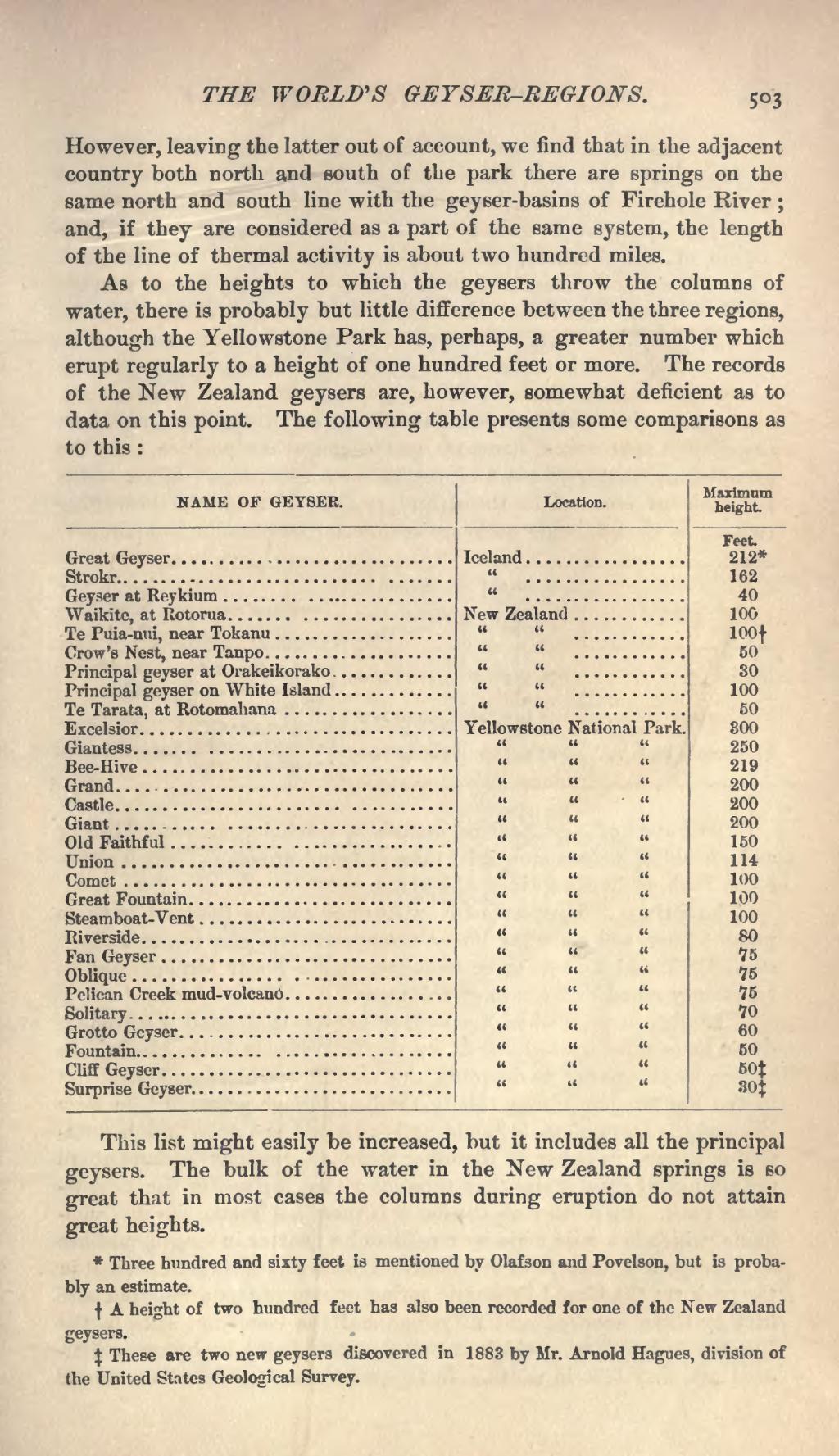However, leaving the latter out of account, we find that in the adjacent country both north and south of the park there are springs on the same north and south line with the geyser-basins of Firehole River; and, if they are considered as a part of the same system, the length of the line of thermal activity is about two hundred miles.
As to the heights to which the geysers throw the columns of water, there is probably but little difference between the three regions, although the Yellowstone Park has, perhaps, a greater number which erupt regularly to a height of one hundred feet or more. The records of the New Zealand geysers are, however, somewhat deficient as to data on this point. The following table presents some comparisons as to this:
| NAME OF GEYSER. | Location. | Maximum height. |
| Great Geyser | Iceland | 212[1] |
| Strokr | " | 162 |
| Geyser at Reykium | " | 40 |
| Waikite, at Rotorua | New Zealand | 100 |
| Te Puia-nui, near Tokanu | "" | 100[2] |
| Crow's Nest, near Taupo | "" | 50 |
| Principal geyser at Orakeikorako | "" | 30 |
| Principal geyser on White Island | "" | 100 |
| Te Tarata, at Rotomahana | "" | 50 |
| Excelsior | Yellowstone National Park | 300 |
| Giantess | """ | 250 |
| Bee-Hive | """ | 219 |
| Grand | """ | 200 |
| Castle | """ | 200 |
| Giant | """ | 200 |
| Old Faithful | """ | 150 |
| Union | """ | 114 |
| Comet | """ | 100 |
| Great Fountain | """ | 100 |
| Steamboat Vent | """ | 80 |
| Riverside | """ | 75 |
| Fan Geyser | """ | 75 |
| Oblique | """ | 75 |
| Pelican Creek mud-volcano | """ | 75 |
| Solitary | """ | 70 |
| Grotto Geyser | """ | 60 |
| Fountain | """ | 50 |
| Cliff Geyser | """ | 50[3] |
| Surprise Geyser | """ | 30[4] |
This list might easily be increased, but it includes all the principal geysers. The bulk of the water in the New Zealand springs is so great that in most cases the columns during eruption do not attain great heights.
- ↑ Three hundred and sixty feet is mentioned by Olafson and Povelson, but is probably an estimate.
- ↑ A height of two hundred feet has also been recorded for one of the New Zealand geysers.
- ↑ These are two new geysers discovered in 1883 by Mr. Arnold Hagues, division of the United States Geological Survey.
- ↑ These are two new geysers discovered in 1883 by Mr. Arnold Hagues, division of the United States Geological Survey.
